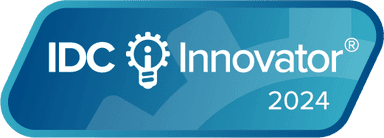Pricing OperationsAug 06, 2024
Transforming raw SaaS usage data into billing metrics
Find out more about how Metering by m3ter, can turn any data into a billable metric, no matter how complex your pricing is.
With Metering by m3ter, you can turn any data into a billable metric, no matter how complex your pricing is.
Key takeaways:
- Metering by m3ter enables users to seamlessly meter product usage, pricing, and account data to get to a billable unit.
- Apply calculations to raw usage data at the individual record level with Derived Fields, aggregate usage records on a rolling basis, and segregate data automatically based on your chosen dimension.
- Unlike other solutions that require pre-aggregated data, m3ter ingests raw data, enabling all data transformation – and any updates or changes to pricing – to occur in-platform without requiring data to be re-ingested.
Simplifying billing for complex pricing models
SaaS pricing looks very different today than it did when Salesforce launched the first SaaS product in 1999. The evolution has introduced a whole spectrum of pricing models, with usage-based elements in particular growing in popularity in recent years.
The combination of usage-based pricing with other models has also drastically increased the complexity. Credit models have emerged as one option for handling this challenge: They allow vendors to simplify pricing when they have many products, services, and usage metrics which could all be bought by a single buyer.
But even if credit models simplify pricing for the buyer, they do not fix the complexity of billing; in fact, they are one of the most challenging models to implement and operate, particularly with legacy or build-your-own billing infrastructure. Product usage, pricing, and accounts all have to be metered and rated to get to a billable unit.
Whether you use a credit model or any other form of complex pricing, Metering by m3ter seamlessly transforms your raw data with even the most intricate of pricing logic. This article will walk through how our Metering features can apply to credit models, but the features can also be used for any other pricing models and billable unit.
The fix: Metering by m3ter
With Metering by m3ter, vendors can seamlessly transform raw usage data into billable units and update pricing logic at any time.
Metering consists of three main features:
- Derived fields – Enables users to apply a calculation to raw usage data at the individual record level, leading to a new measurement metric (e.g., if hosting_resource_consumption is less than 1024 KB, output chargeable_storage to 0 KB; i.e., anything under 1 MB shouldn’t be charged)
- Aggregations – Enables aggregation of the usage records on a rolling basis, per billing period (i.e., Sum/ Max/ Min of a field across the whole month)
- Segmentation – Allows users to split aggregated data automatically based on some value on the usage record (e.g., Sum of a field across the whole month split by the record type, sum of cloud hosting resources used split by region)
A spreadsheet visualization of how usage data can be transformed into Derived Fields, Aggregations, and Compound Aggregations can be seen below. This is an oversimplification of the terms – and the calculations possible – into a format that Finance and other non-tech teams see every day.
To then add segmentation on top of this requires recreating this table for each segment you operate in, with the unique pricing requirements for each. You can see how quickly this becomes unscalable in Excel!
Source metrics of usage are typically not 1:1 with the credit, so without m3ter, the Engineering team would have to do all of this data transformation at source.
m3ter’s metering capabilities stand apart from other billing systems on the market for a number of reasons. Our team was so confident in how we meter data that we literally named our company after it!
- Transparency – Whereas other vendors require and store only your pre-aggregated data, m3ter stores the raw data, vastly improving the transparency of how a raw usage record becomes a billable event. This is crucial for credit models, as customers need transparency on what went into the credit calculation.
- Built for scale – Metering with m3ter is seamless no matter how fast or large your company grows. Ingest billions of measurements per month, perform up to 15 Derived Fields calculations per measurement, and segment on up to 5 fields with a total of 1,000 segments.
- Mediation of complex pricing logic – Many companies with usage-based pricing shy away from mediation (i.e. Derived Fields) in-platform due to scaling concerns. m3ter makes this seamless. Derived Fields make increasingly complex pricing logic incredibly easy to solve for in-platform, without needing to change the usage data at the source.
- Compound Aggregations – Take it one step further and combine aggregations from multiple products. This is often a crucial piece for credit-based models, where “credits” are the consistent metric and you can sell them across different products, rolling them all up into a compound aggregation.
The transformative business impact of Metering by m3ter
The sophistication of the m3ter platform makes the process of metering usage data a low lift for any user, whether you’re an engineer making use of our APIs or a finance professional operating in the UI. Simplifying this process has downstream impacts, too:
Engineering
Automating the calculation of Derived Fields and other complex tasks reduces the burden on Engineering teams, allowing them to focus on core product development and innovation rather than routine data processing tasks.
With a low-code platform handling mediation, aggregation of pricing metrics, and segmentation, those Engineering teams aren’t distracted supporting billing. They can instead spend their time on core product development and deploy new features and updates more quickly. This accelerates the overall product development cycle.
At the same time, a UI-based platform fosters better collaboration between Engineering, Finance, and Pricing teams. Engineers can provide input and support without being solely responsible for implementation, leading to a more cohesive workflow.
Finance
Having access to the full trail of how raw data turns into billable metrics allows Finance to more effectively audit usage records and bills, easily correct and fix errors that occur, respond to customer queries, and even rerun billing with different pricing metrics without re-ingesting the usage data (e.g., retroactively after a renegotiation of a sales contract).
Finance can do all this without needing to understand the mechanics of a so-called “black box” system they used to rely on, because the m3ter UI is easy to use and empowers finance to be more impactful when they can easily access the numbers in near-real time.
Reducing the Finance team’s reliance on engineering work also decreases operational costs for the FinOps stack in the long term.
Pricing or Product
Access to segmented and aggregated usage data provides valuable insights, enabling the Pricing or Product team – pending which teams exist and who owns pricing and packaging at your company – to make informed decisions based on actual usage data.
They can use this data and other parts of the m3ter platform to experiment with different pricing strategies and quickly implement changes, all without requiring any Engineering resources. This agility is crucial when scaling and can lead to more competitive and adaptive pricing structures.
Finally, a UI-based, low/no-code platform simplifies the process of designing and adjusting pricing models, significantly reducing the time required to implement changes and allowing the team to respond swiftly to market demands.
Getting started with Metering by m3ter
Metering by m3ter ensures your raw usage data can be transformed into the billable units of your choosing, no matter how complex your pricing model or how often you experiment with changes.
Schedule a demo and see how the powerful m3ter platform can automate your complex metering and billing.
You might also like…
Find out how your business can automate usage-based pricing today
See a demo, get answers to your questions, and learn our best practices.
Schedule a demo


